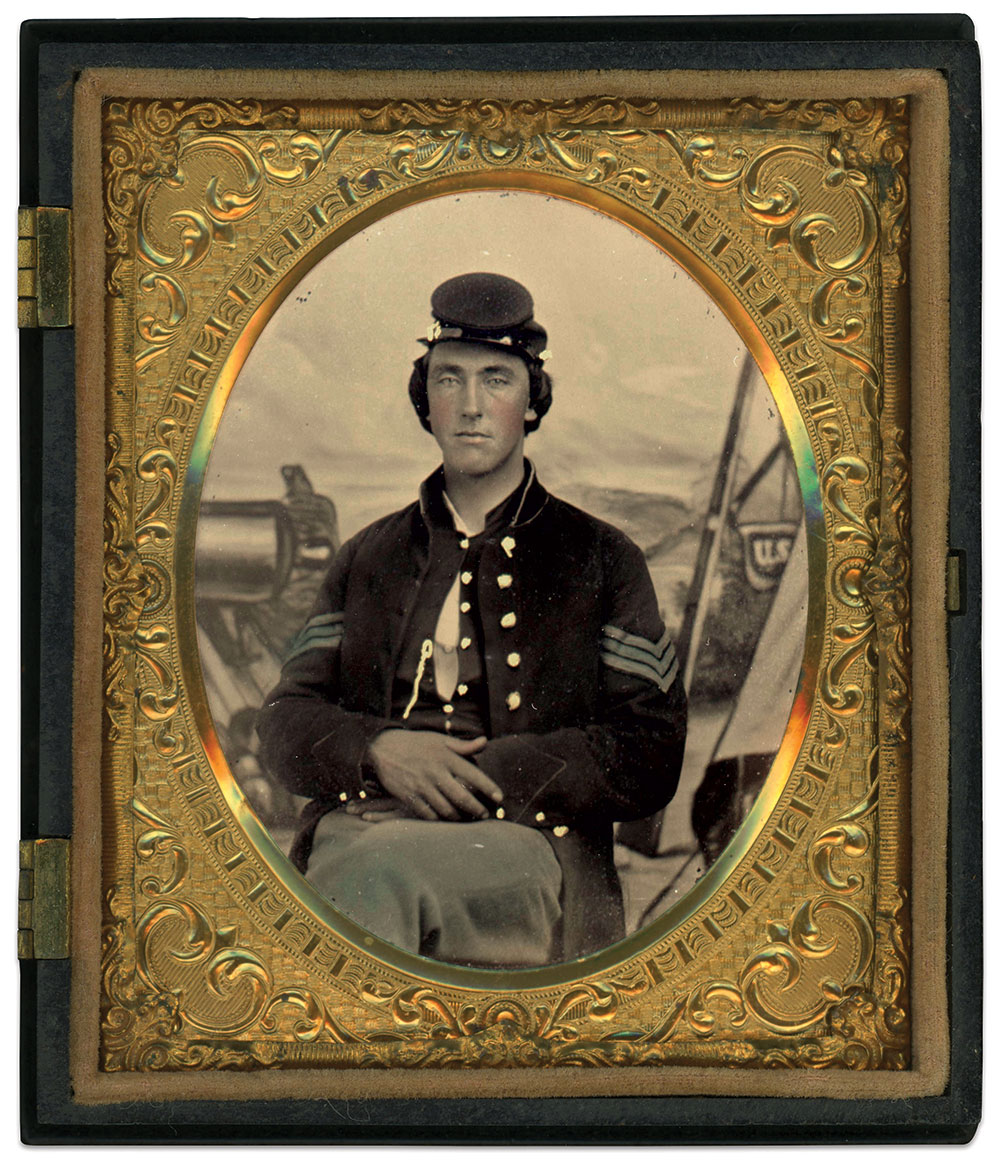
Dressed to kill, this sergeant is armed with a Model 1840 non-commissioned officer’s sword and Savage revolver. Of interest is the oval plate on his shoulder belt: Rather than the standard Model 1826 version, he wears a Model 1839 waist belt plate.

The distinctive red-piped vest pockets marks this sergeant as a Baxter’s man—a member of the 72nd Pennsylvania Infantry, or Baxter’s Fire Zouaves. Recruited in Philadelphia in 1861, and named after its colonel, DeWitt Clinton Baxter, the regiment participated in numerous engagements, including the Battle of Gettysburg. This soldier is properly dressed with the exception of gaiters.

Removing your hat upon entering a home or business has a long tradition as good etiquette. Perhaps this trooper observed the custom inside the photographer’s studio. Or, he might have wanted to highlight his hat brass in a show of regimental pride.

The use of actual pine boughs and limbs artfully arranged with a painted canvas featuring a fence creates an unusually dynamic backdrop for a sergeant’s portrait. This mixed media approach is rare for the period.

Two U.S. Colored regiments with distinguished battle records are connected to Lancaster, Ohio. The 5th and 27th Infantries saw plenty of action during the last year of the war in Virginia and North Carolina and suffered numerous casualties. Was the non-commissioned officer pictured here among them? The photographer’s back mark suggests he may have served in one of these distinguished regiments.

The serene expression on the face of this infantryman contrasts with the military backdrop behind him. How he fared in the fury of battle is unknown.

A fortress wall of rough-hewn logs dominates the backdrop in this portrait of a Union sergeant, posed ramrod straight next to a stand of muskets.

The initials T.E.R. inscribed on the back of the mount of this portrait of a sergeant and his light artilleryman friend offers a clue to their identity.
SPREAD THE WORD: We encourage you to share this story on social media and elsewhere to educate and raise awareness. If you wish to use any image on this page for another purpose, please request permission.
LEARN MORE about Military Images, America’s only magazine dedicated to showcasing, interpreting and preserving Civil War portrait photography.
VISIT OUR STORE to subscribe, renew a subscription, and more.

